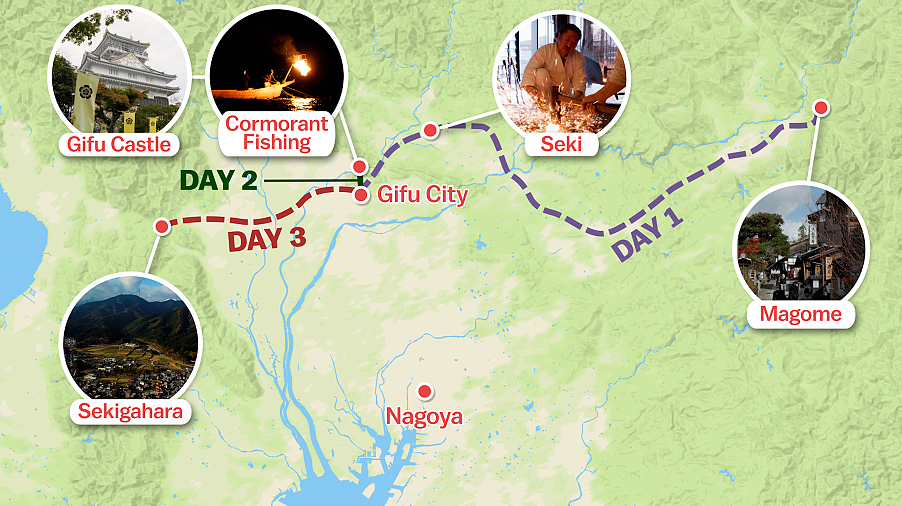In the footsteps of samurai warlords
For Japanophiles around the world, think of Japanese culture and one of the first images to come to mind is that of the samurai - feudal warriors combining the laconic machismo of a wild-west gunfighter with a quiet, contemplative dignity. From the films of legendary director Kurosawa Akira to manga, anime and even videogames, the samurai have lost none of their power to fascinate and enthrall.
For our latest project, we embarked on a three-day trip to Gifu Prefecture - following in the footsteps of samurai warlords while delving into some of the most compelling events of Japan's Warring States Period.
Beginning in the old post town of Magome, our journey would take us to Seki, one of the great centers of historical swordsmithing, Gifu City where we visited a reconstructed castle and took in a demonstration of traditional cormorant fishing, and finally to Sekigahara, site of the greatest and most decisive samurai battle.
Day 1
Setting out from Tokyo Station on the morning of day one, we began by taking the Tokaido Shinkansen as far as Nagoya, before changing to the JR Chuo Line to Nakatsugawa - one of the main transportation hubs in the northwest corner of Gifu Prefecture. From here, a 25-minute bus ride along winding mountain roads brought us to Magome, one of the few post towns along the historic Nakasendo highway to be preserved in something like its original form.
In the centuries before trains and today's mass transit system, the majority of travel was done on foot, via just a handful of paved roads. One of the most important of these, the Nakasendo wound its way inland from Kyoto, through the Central Japan Alps to Edo - a town that would become the modern-day metropolis of Tokyo.
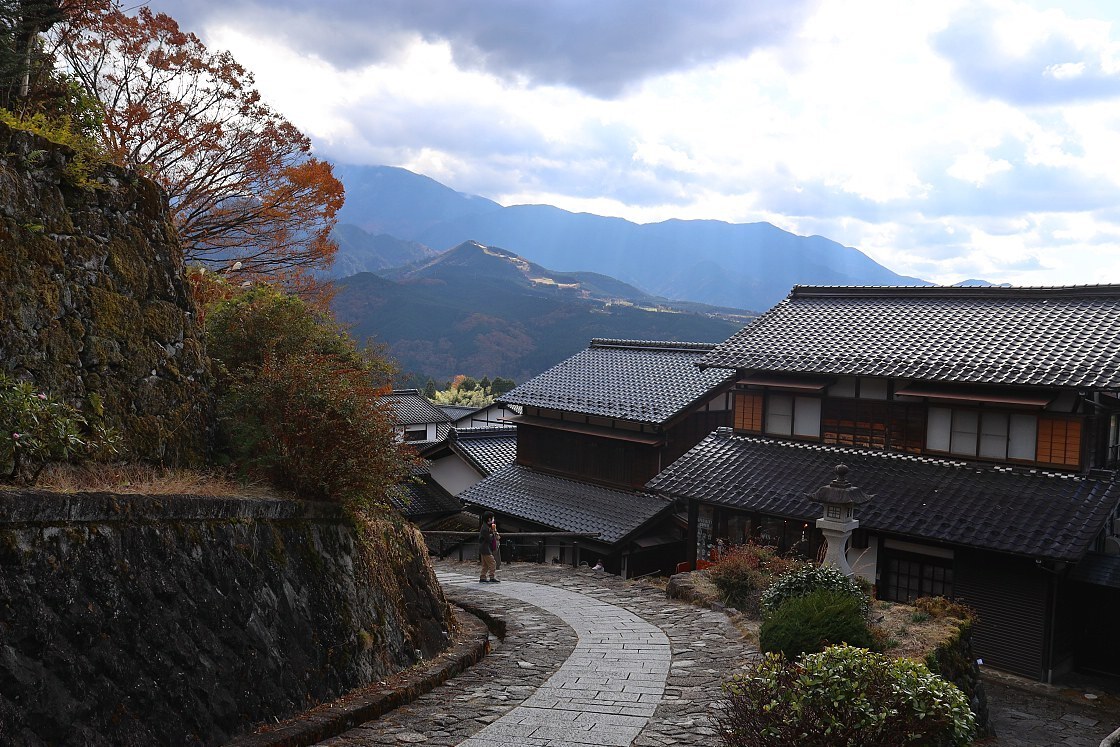
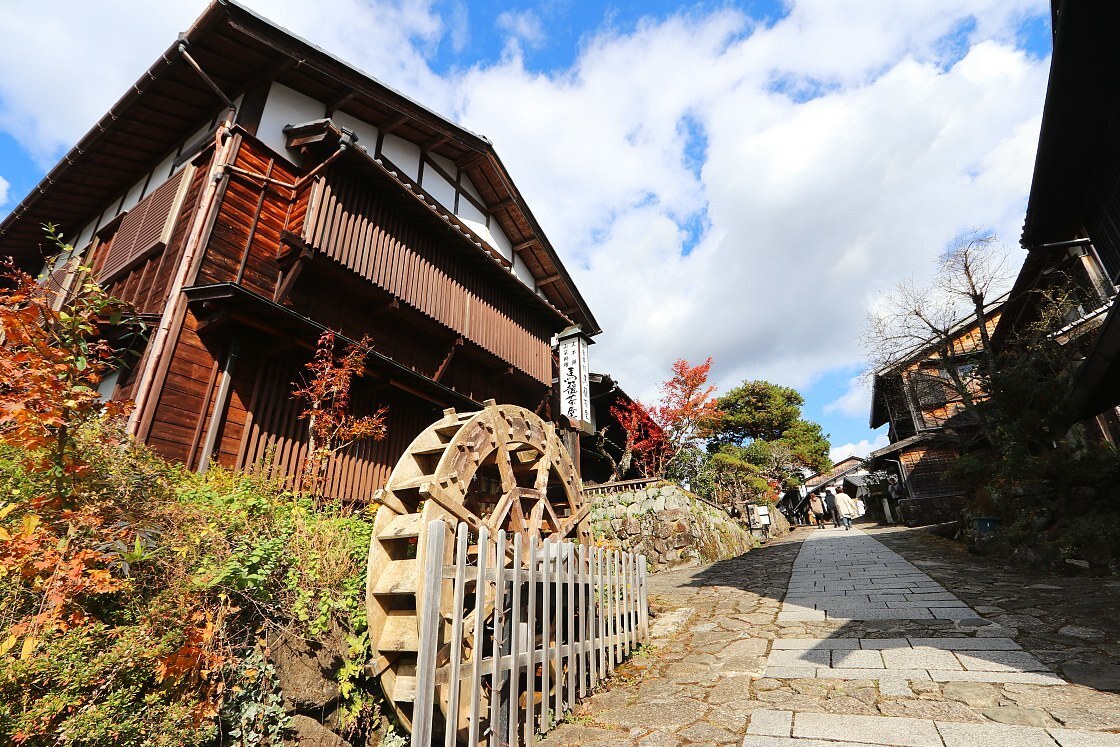
During the chaos of the warring states period, post towns like Magome would have been a welcome respite on an exhausting and potentially dangerous journey, offering food, lodging and perhaps some entertainment. As centuries of near-constant warfare gave way to the stability of the Edo Period, the ruling Tokugawa Shogunate made great efforts to improve major highways, adding a relay system of porters and pack horses. Feudal lords were meanwhile required to spend a portion of each year in the capital, making them and their retinues a regular sight on the roads.
To visit Magome today is to take a step back in time, with a long, picture-perfect main street lined with beautifully preserved houses and surrounded with sweeping views of the Kiso Valley. From Magome, we took a bus back to Nakatsugawa and changed to a train for Seki - a city whose 800-year tradition of forging swords, knives and cutlery have earned it the nickname gcity of bladesh.
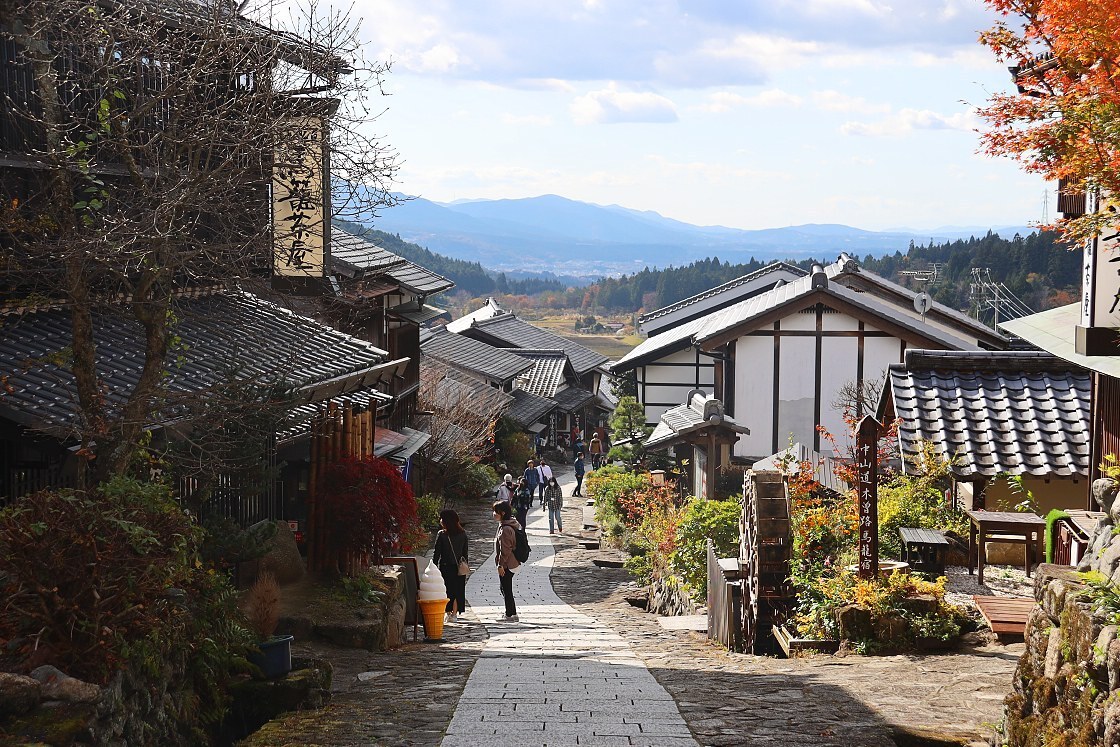
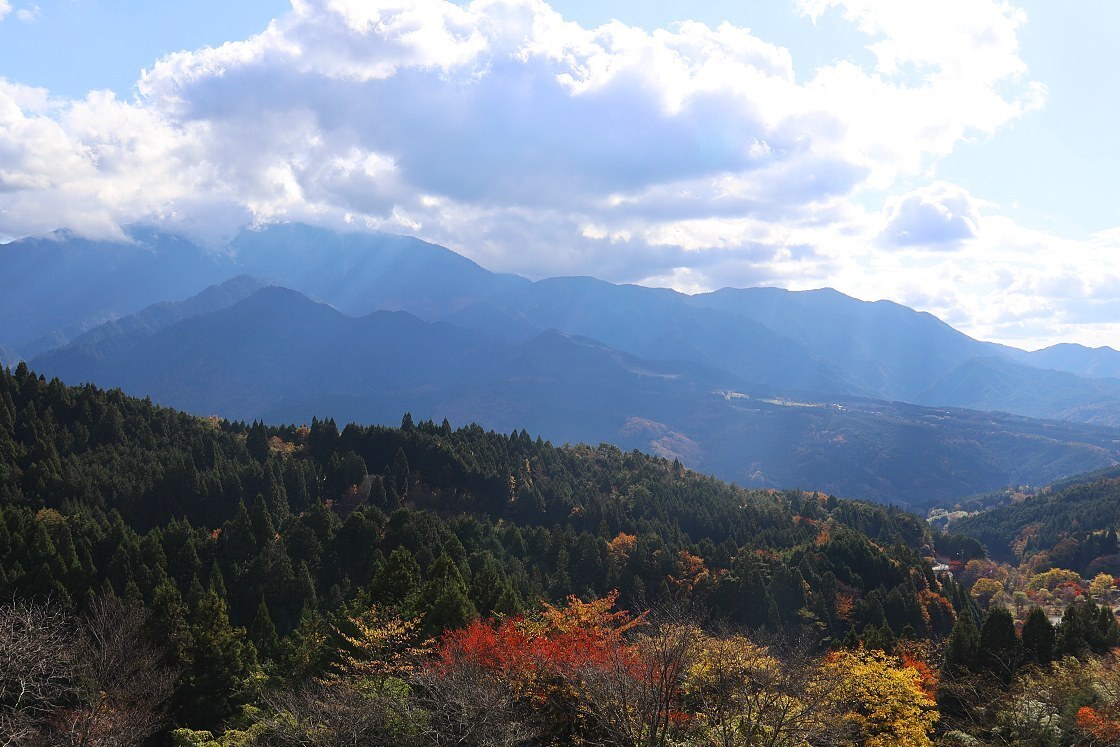
Located between two rivers with good local clay and easy access to coal, Seki was blessed from the beginning with the perfect conditions for metalwork. At the height of the warring states period, as many as 300 sword makers operated in and around the city, establishing a distinct local tradition known as the Mino-den. Of their swords it was often said that they gdon't bend, don't break, and cut wellh.

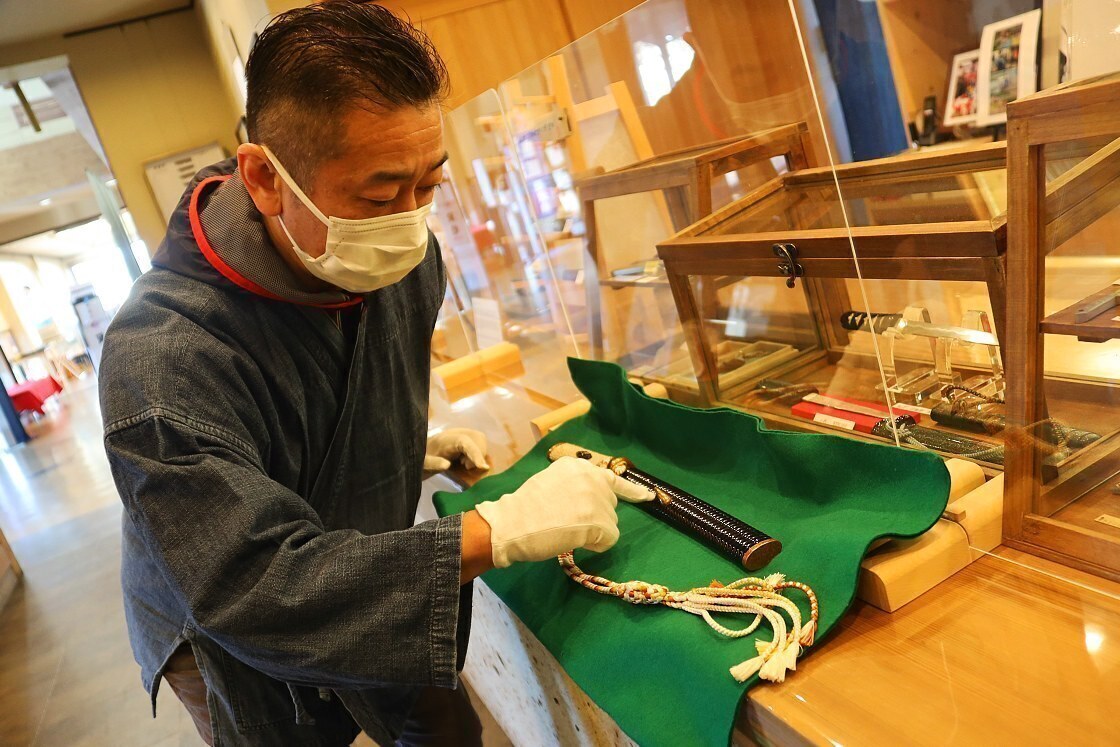
With industrialization, demand for swords was greatly reduced but the city continued to evolve and grow, becoming a world-class production center for blades of all kinds - from nail clippers to the highest grade chef's knives. To find out more, we visited the Seki Hamono Museum - at once an information center, exhibition space and shop with up to 2000 edged products on display.
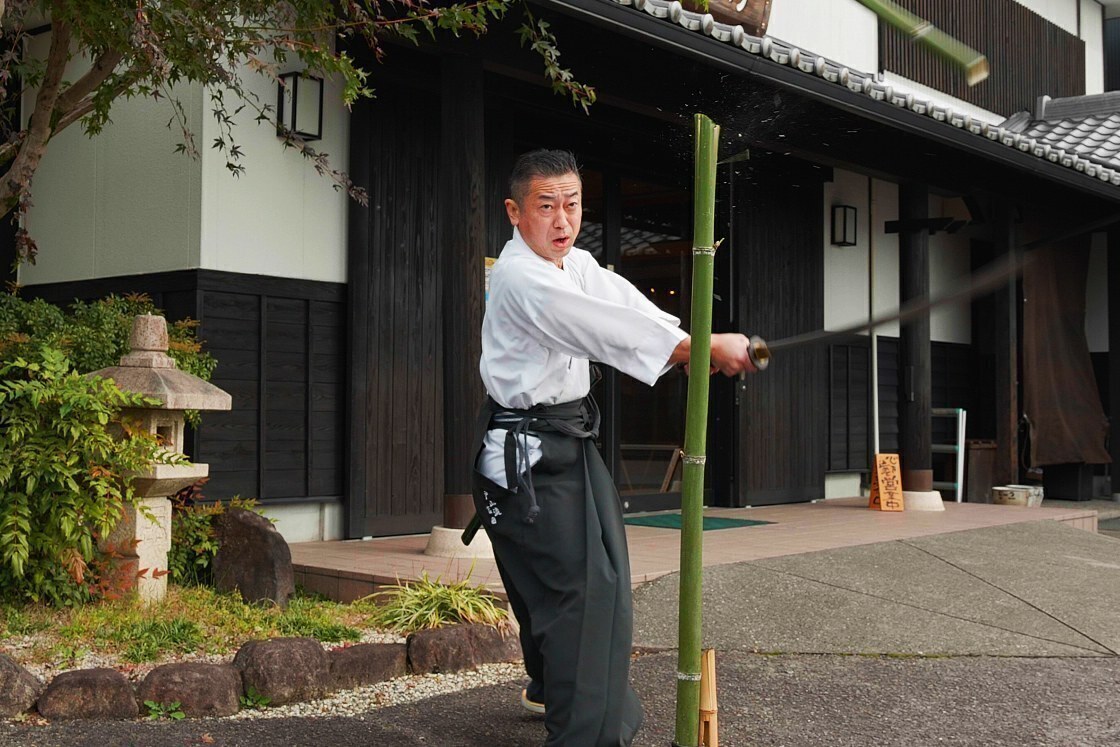
After looking at some beautiful local swords and learning about the process behind them, it was time to practice some basic forging techniques with the help of 25th generation master sword maker Fujiwara Kanefusa. With an actual sword taking around a month of highly skilled work to produce, I instead helped to produce a simple paper knife from a heavy recycled nail - plunging it repeatedly into hot charcoal, working a set of traditional bellows and hammering the glowing metal into a flat, curved blade.
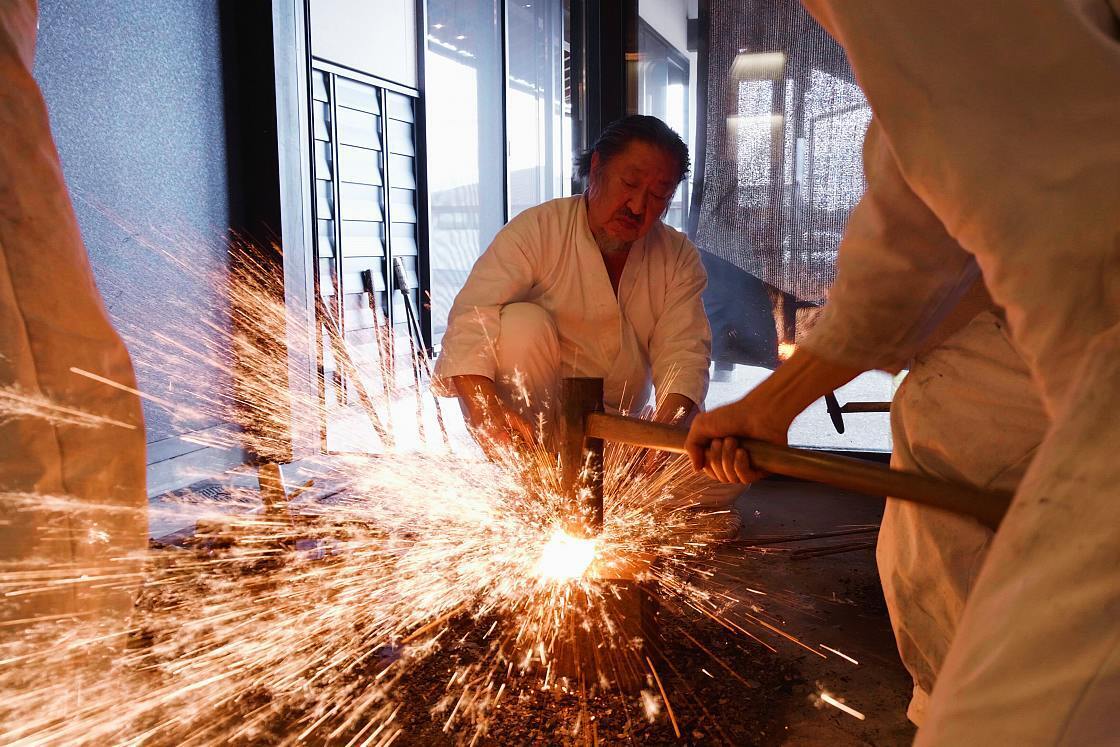
The samurai themselves may have passed into history, but the art of Mino-den sword making has continued to the present day. Taking our leave of the Seki Hamono Museum, we made our way by bus and train to the city of Hashima, to meet another of the ten-or-so licensed swordsmiths still working in the region.
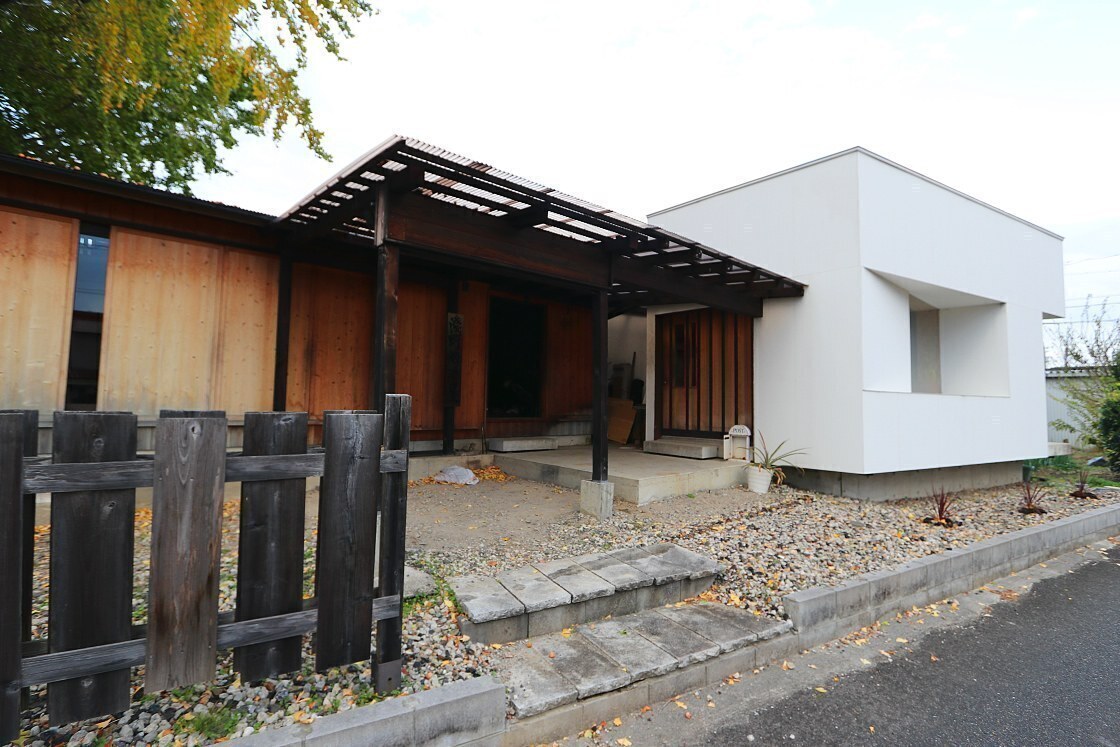
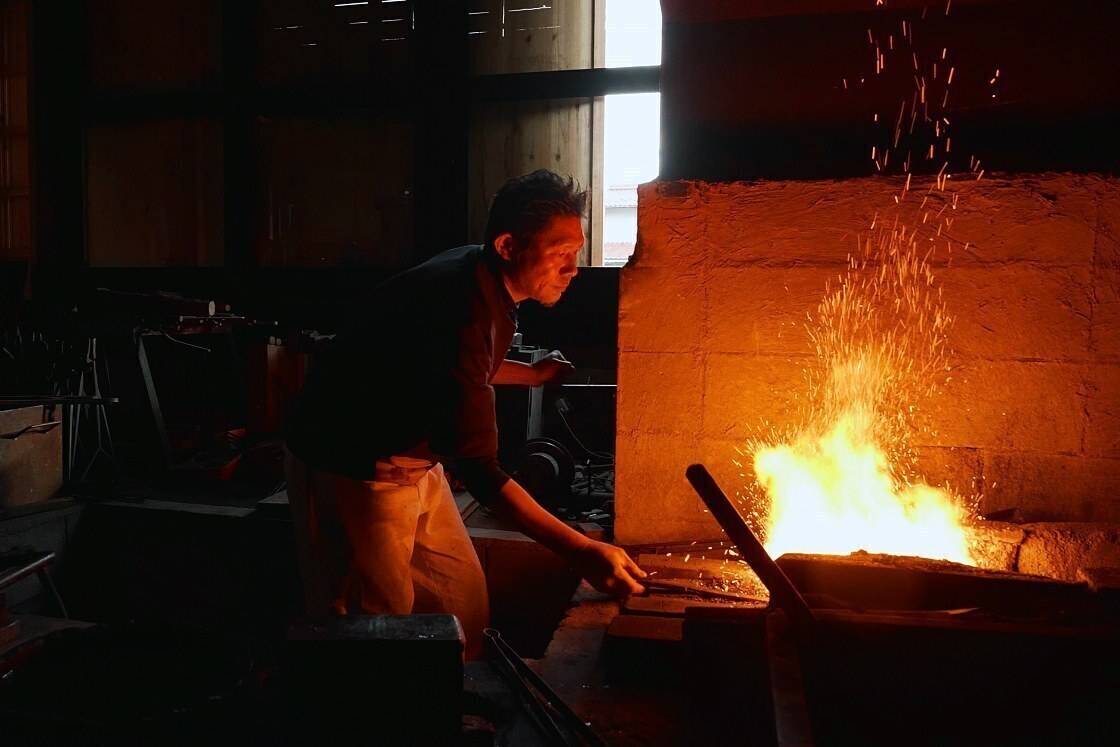
Now a master craftsman with over 25 years' experience, Asano-san's journey as a sword maker began with a grueling apprenticeship lasting several years. gFor the first three years as a disciple,h he recalled, gI had absolutely no idea what I was doing or to what purpose. But one day, all the things that the master made me do suddenly made sense, and I started to understand the meaning of those things. This took a lot of time.h
Today, Asano-san is well-known in the sword making world and has given lectures and demonstrations in France, Canada and the US. Despite his success however, he is quick to emphasize that mastery is a lifelong pursuit: gIf you were to ask me all the processes that need to be followed I wouldn't be able to explain precisely, since I think my own learning process isn't finished yet. Making a mistake, learning from it, and putting all your strength into surpassing your last effort is basically the lifestyle of a blacksmith disciple.h

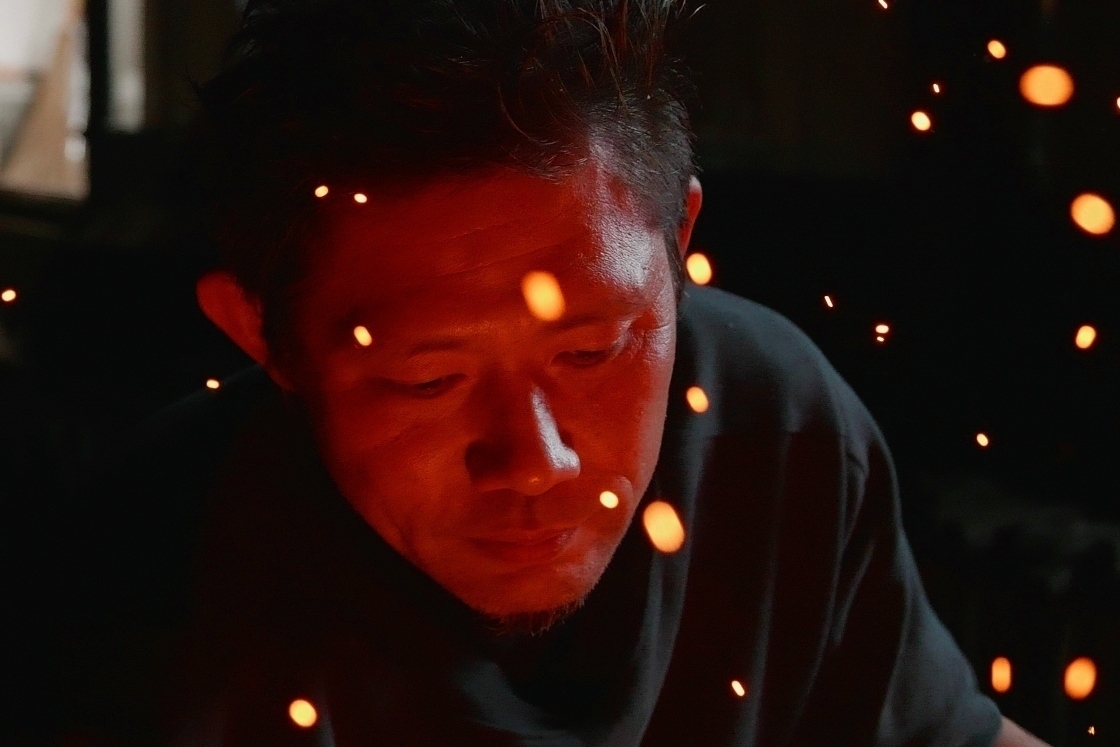
After a fascinating conversation, it was time to continue on our journey. Retracing our steps to the nearby Gifu Hashima Station, a forty-minute train ride brought us to Gifu City and our accommodation for the night.
Day 2
The second day of our trip began with a bus ride to Gifu Park, from where we took a ropeway and short walk up the steep slopes of Mount Kinka. Here, overlooking the city from a narrow mountain ridge sits an attractive reconstruction of Gifu Castle - a fortress that, despite its relatively small size, played a significant strategic role in one of Japan's most turbulent eras.
From 1467 until 1590 - Japan was torn apart in an unending cycle of war, rebellion and shifting alliances. Known as the Period of Warring States - it was both the heyday of the samurai, and the crucible in which the country's future was formed.
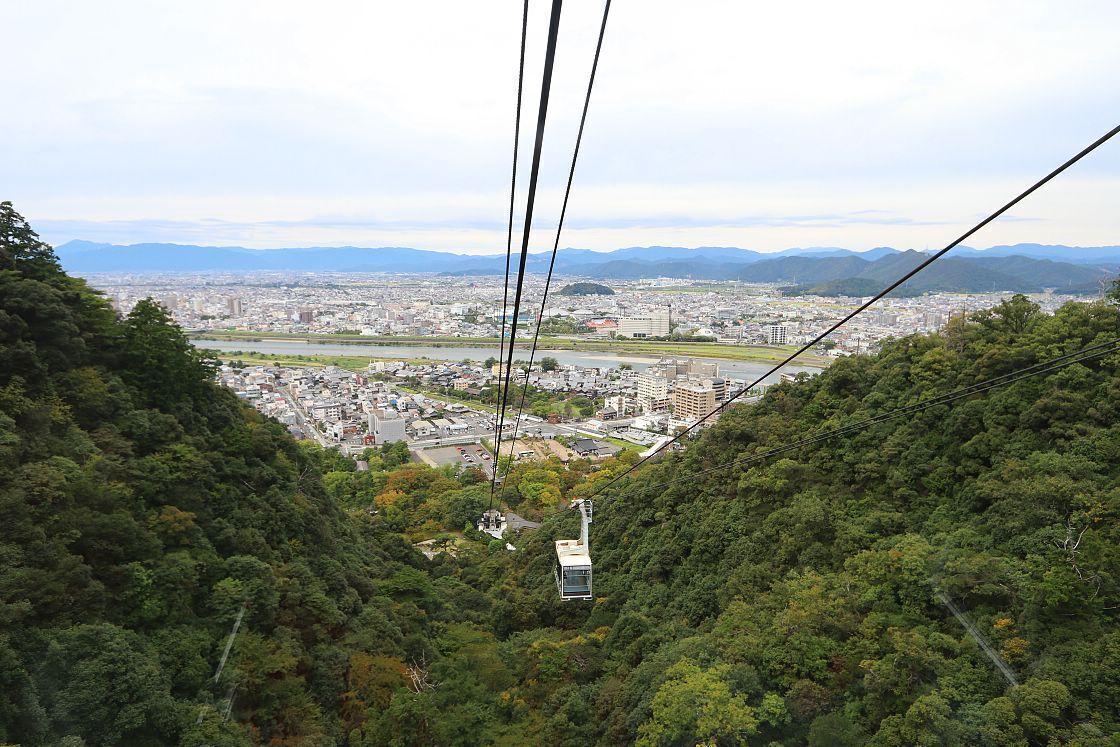
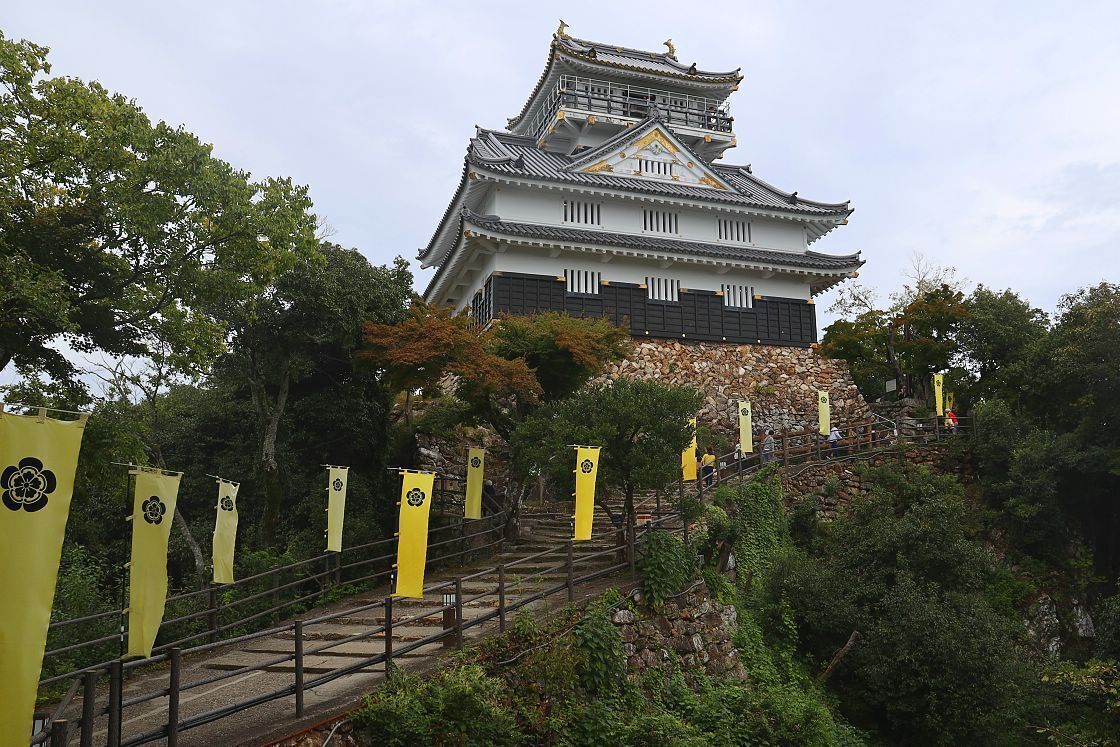
The final decades of the period came to be dominated by three legendary warlords, whose destinies ultimately intertwined with each other and that of the nation itself. The first was Oda Nobunaga, whose determination to unify the country under his rule would define a generation.
Originally built in the early 13th century, Gifu Castle changed hands several times with the shifting tides of war, growing in size with each new owner. In 1567, Oda Nobunaga was able to infiltrate and take it, greatly enhancing his strategic power and giving rise to the aphorism gwho controls Gifu, controls Japanh. Nobunaga would make the castle his home for the following 10 years and made many improvements, including a lavish residence at the foot of the mountain.
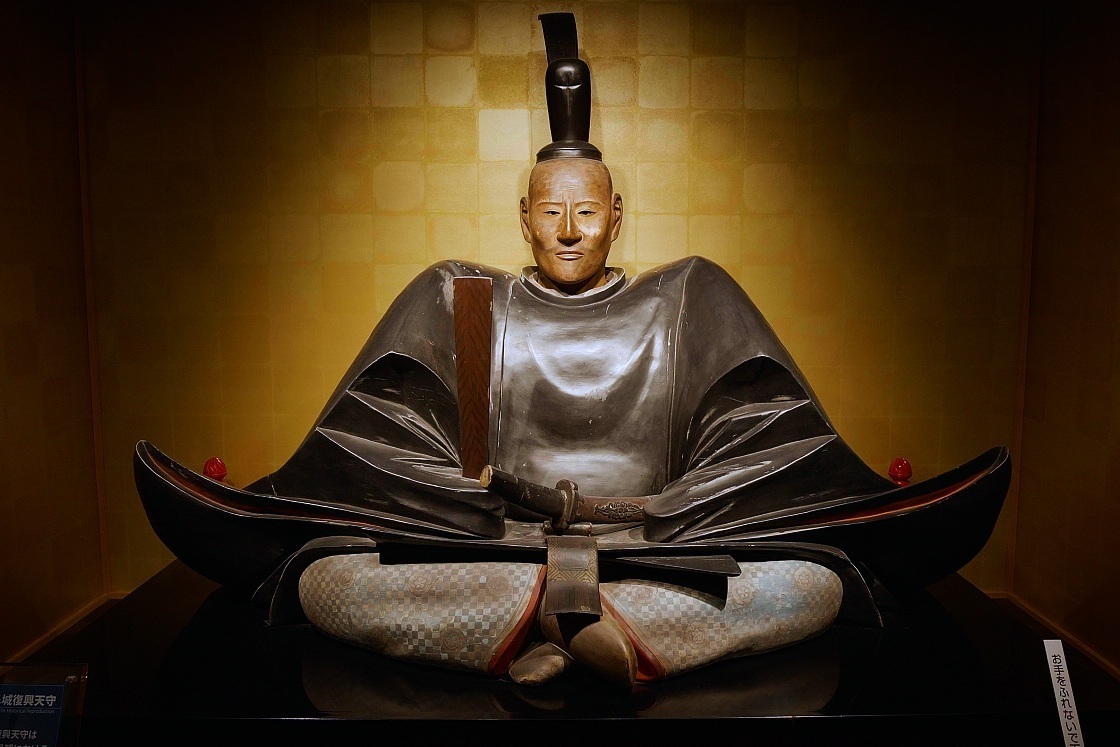

Back at ground level, we made our way on foot to Nagaragawa Onsen, where we would be staying the night at a traditional hot-spring ryokan. Our evening was far from over however, as we still had a unique and highly atmospheric experience to enjoy.
A little after dark, we made our way along the riverside to join a riverboat cruise, including a specially prepared bento dinner and the chance to watch the enchanting spectacle of ukai, or cormorant fishing, up close.
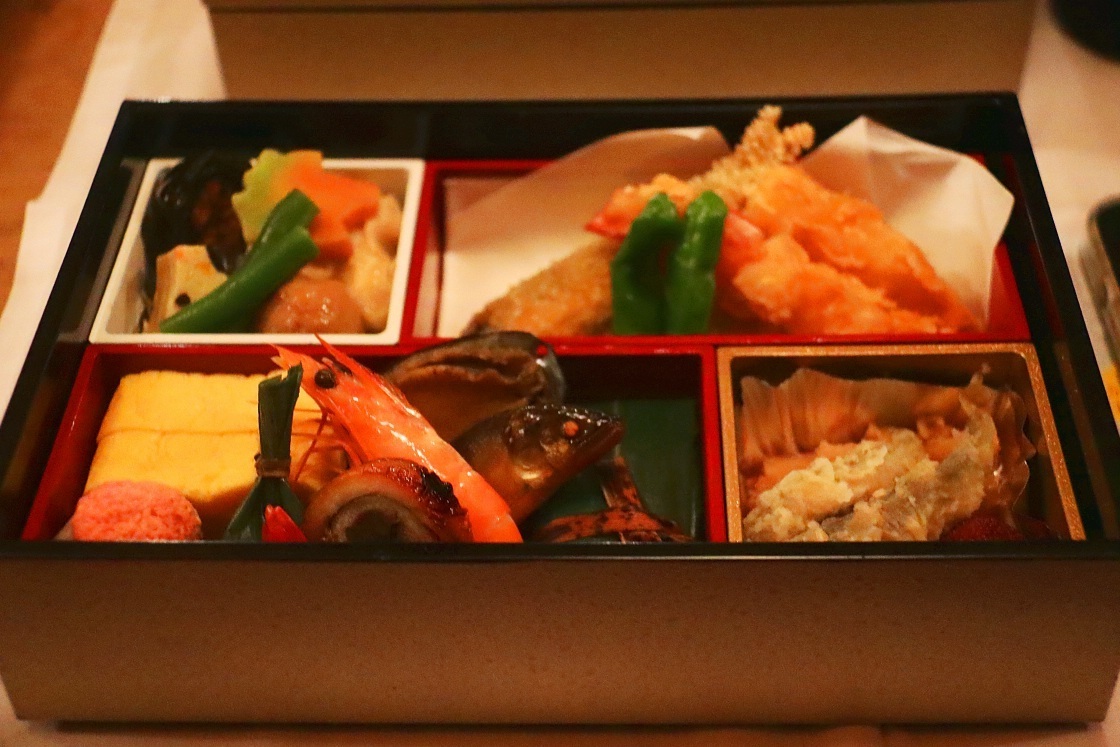
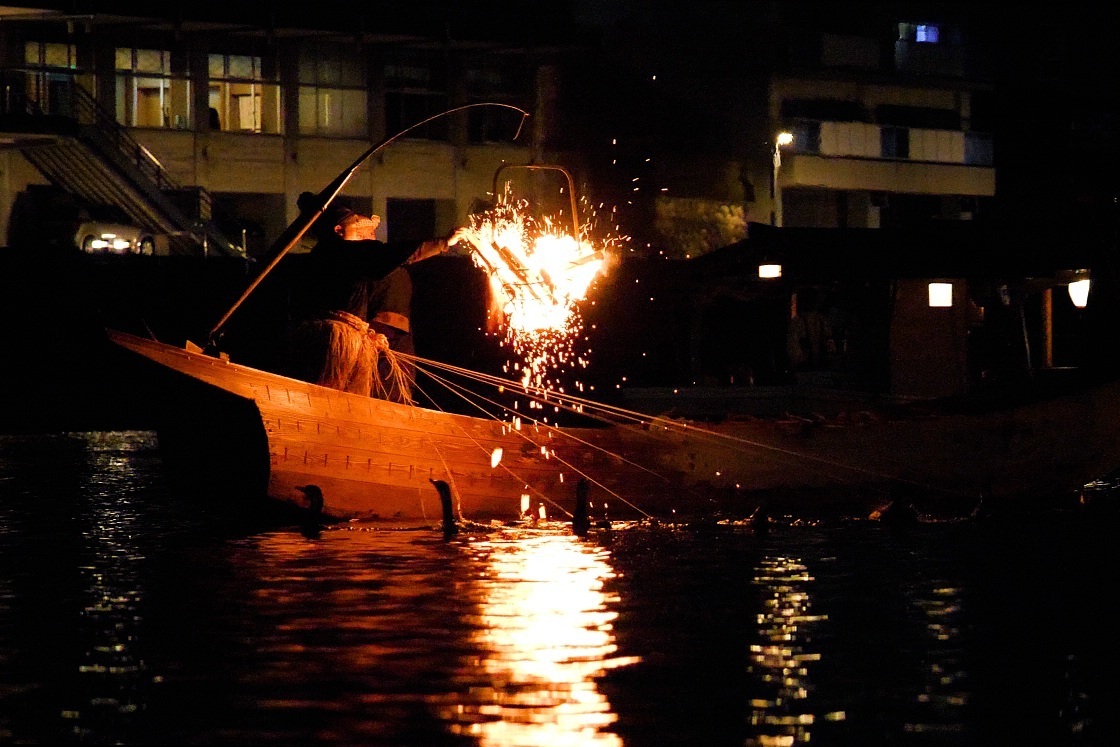
On each boat are two boatmen and a fisherman holding 10-12 of the specially trained birds on leashes. The firelight from the lanterns attracts ayu, or sweetfish, close to the surface where the birds can easily dart under to snatch them up in twos and threes. Snares around their throats prevent them from swallowing their catch, so they instead regurgitate the fish into a basket in return for a tasty reward.
Now practiced in just a handful of places, ukai has a history of around 1,300 years. Here in Gifu it is also linked to Nobunaga, who was said to be so enchanted by a performance that he put the local fisherman on his own payroll and arranged elaborate demonstrations for important visitors. Today, the six local master fishermen, known as usho, are employed by the Imperial Household Agency which looks after the Emperor and his family.
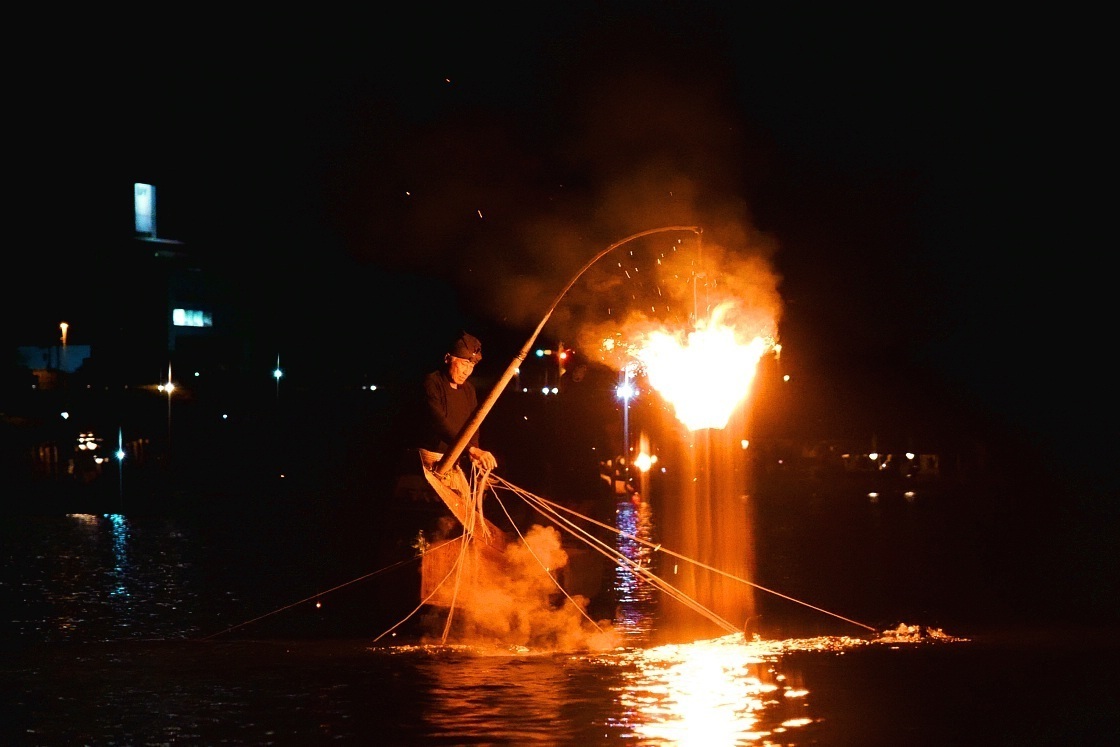

Day 3
For our final day in Gifu Prefecture, we left Nagaragawa Onsen behind and made our way by bus and train to Sekigahara, now a quiet town surrounded by fields and rolling, forested hills. It might not seem like the kind of place where the destiny of a whole nation could be decided, but on October 21, 1600, that is exactly what happened.
After taking Gifu Castle in 1567, the great warlord Oda Nobunaga continued to go from strength to strength. In the course of a 30-year military career, he succeeded in greatly expanding his territory, defeating resistance to samurai rule and even toppling the shogun. In 1582 however, just as he seemed poised to achieve his dream of a country unified under his own rule, he was suddenly assassinated at the hands of one of his own retainers.
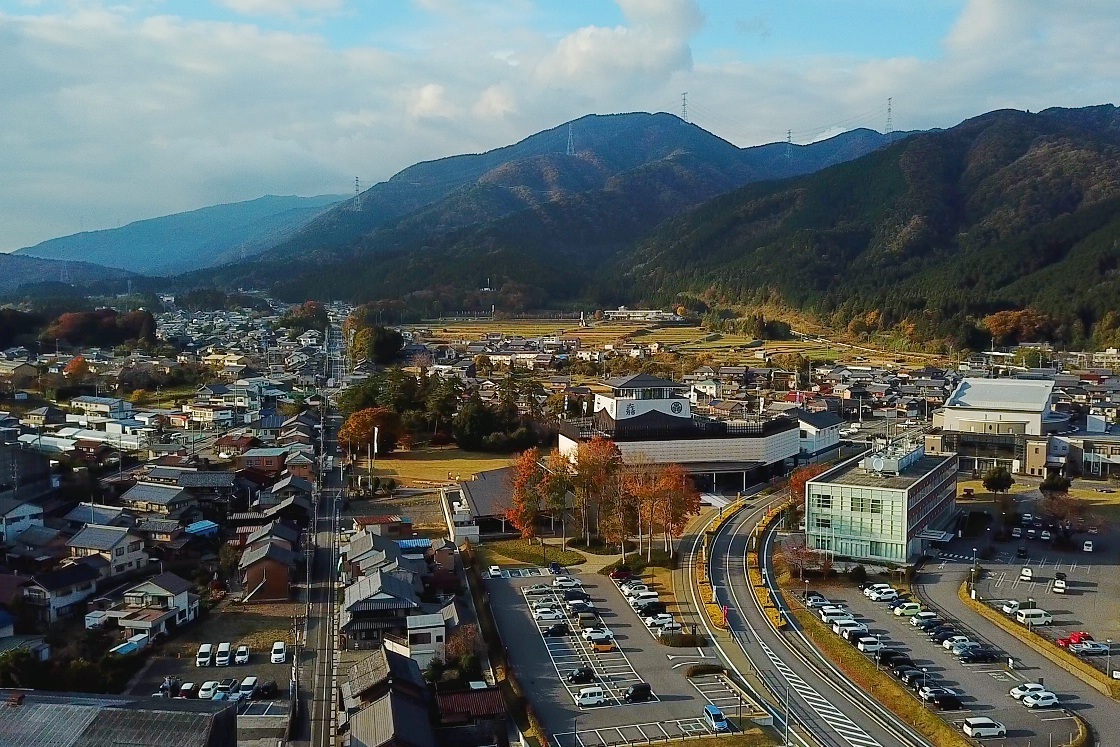
In the ensuing shock and confusion, it fell to Toyotomi Hideyoshi - a man who had risen from humble origins to become Nobunaga's most trusted general - to avenge his master's death and continue the great project of unifying the nation.
Hideyoshi succeeded in bringing the country under control, but when he too passed away in 1598 the ambitious warlord Tokugawa Ieyasu began to seize power, setting himself and his allies on a collision course with samurai still loyal to Hideyoshi's clan, led by Ishida Mitsunari. When Ieyasu marched his army north to fight the rebellious Uesugi clan in 1600, his enemies chose this moment to raise their own army, hoping to block their enemy on his journey home. Following a series of smaller skirmishes, the two sides met on the plain of Sekigahara - Mitsunari's loyalist army on the west, while Ieyasu and his allies approached from the east.
Today, visitors to the site can immerse themselves in the background and events of the spectacular battle that followed at the Gifu Sekigahara Battlefield Memorial Museum, located just a few minutes' walk from Sekigahara Station beside the site of Tokugawa Ieyasu's Final Encampment.
Featuring a number of cutting-edge attractions as well as an impressive collection of artifacts, the museum's innovative approach is reflected in an attractive modern design, with white, patterned walls resembling the canvas tent curtains of a samurai war camp, called jinmaku.
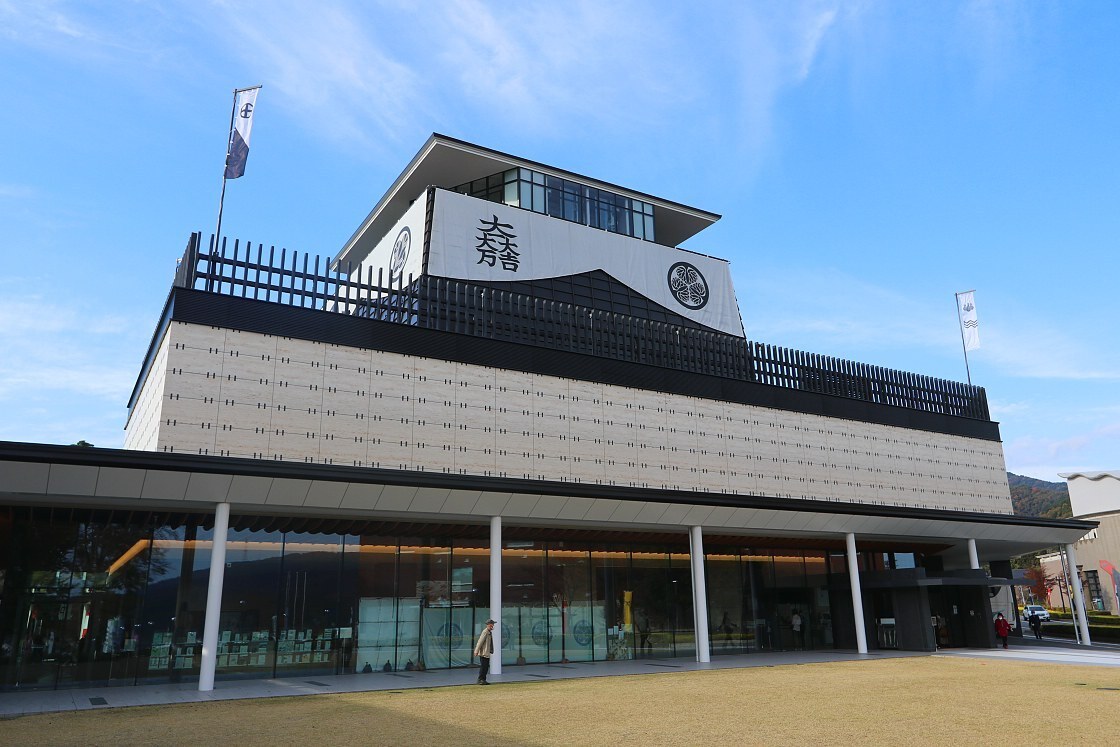
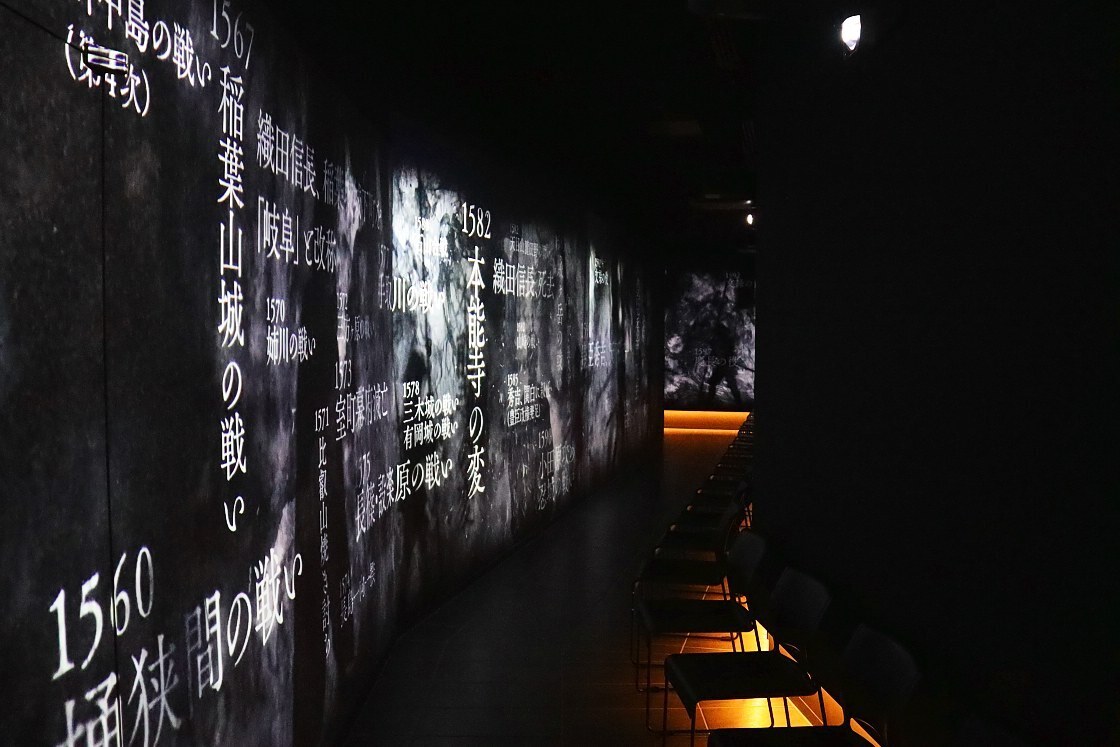
Making our way inside, we found ourselves in a winding corridor with atmospheric light displays, setting a reflective mood while leading into the first attraction, called Ground Vision. Here, a brief presentation on a screen set into the floor took us through the lead-up to and events of the battle. Edited with the snappy pace of a political thriller, the attraction provides the basic facts, sketches out the key players and perfectly sets the scene for the epic confrontation to come.
With the presentation drawing to a close, a set of doors between two standing suits of armor swished open, beckoning us on into the Theater - with rows of cinema seats facing an ultrawide, semicircular screen.


From the Theater, we made our way up to the second floor and the Exhibition Room. I was especially struck by the very first thing we saw - a set of stylized suits of armor representing the main characters introduced moments before in the video. This was followed with an impressive selection of weapons and other artifacts connected with the Period of Warring States.
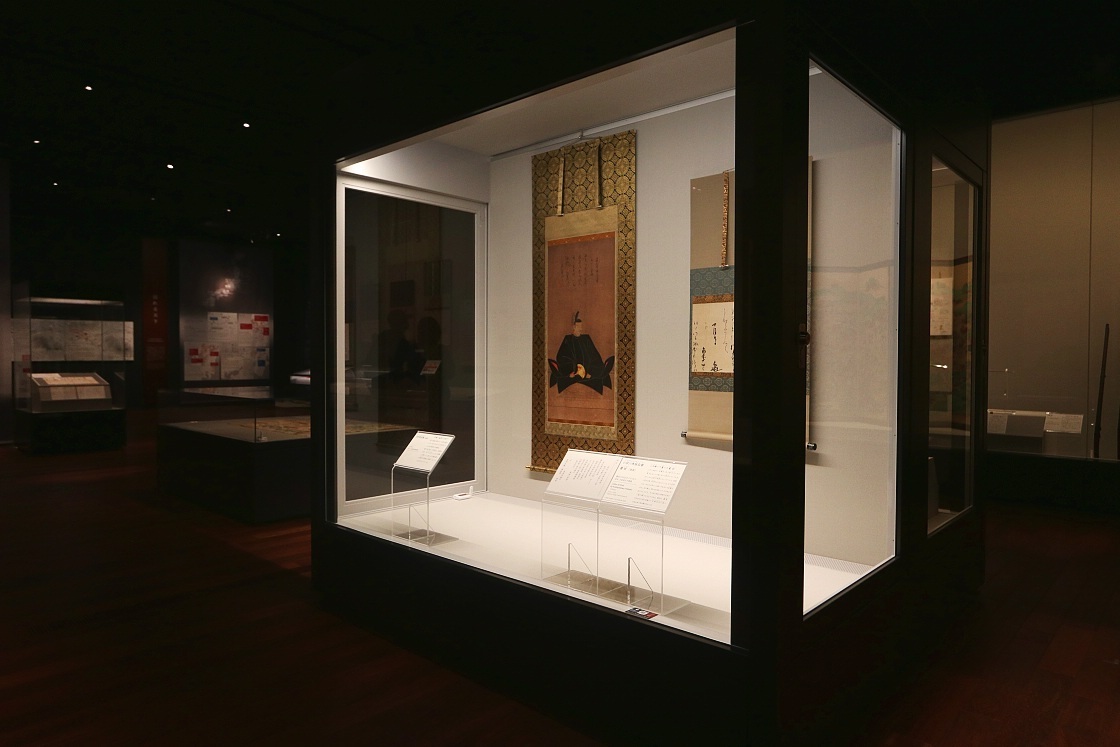
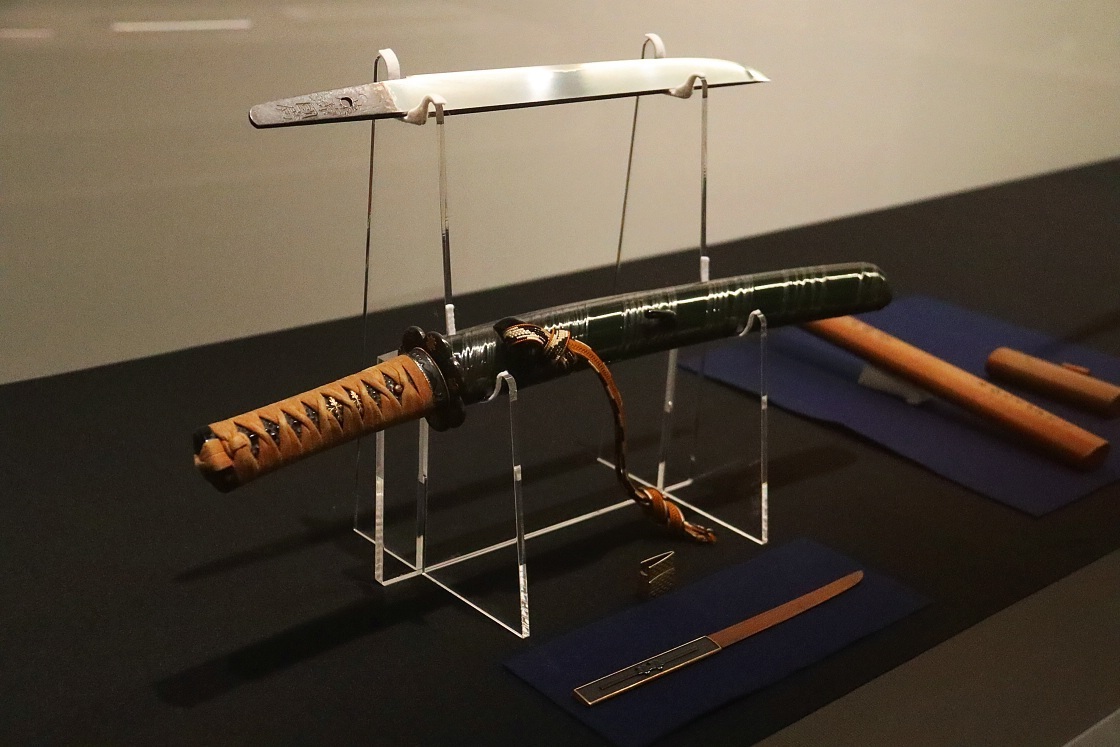

Upon exiting the Exhibition Room, we arrive at the Sengoku Experience Corner, named after the Japanese term for the Warring States Period, named after the Japanese term for the Warring States Period. In this section, visitors can handle weapons and other battlefield tools, dress up in a period outfit, or find out about the lifestyle of a typical Sengoku-era footsoldier through easy-to-understand displays, adding a bit of variety to the learning experience.
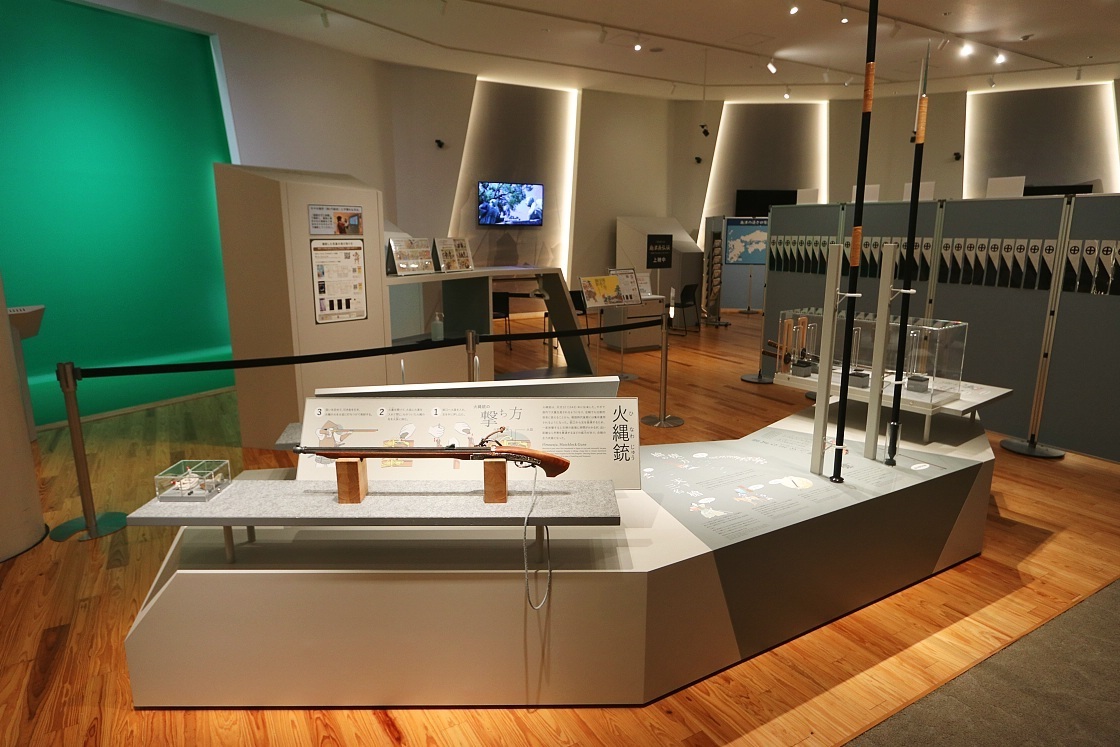
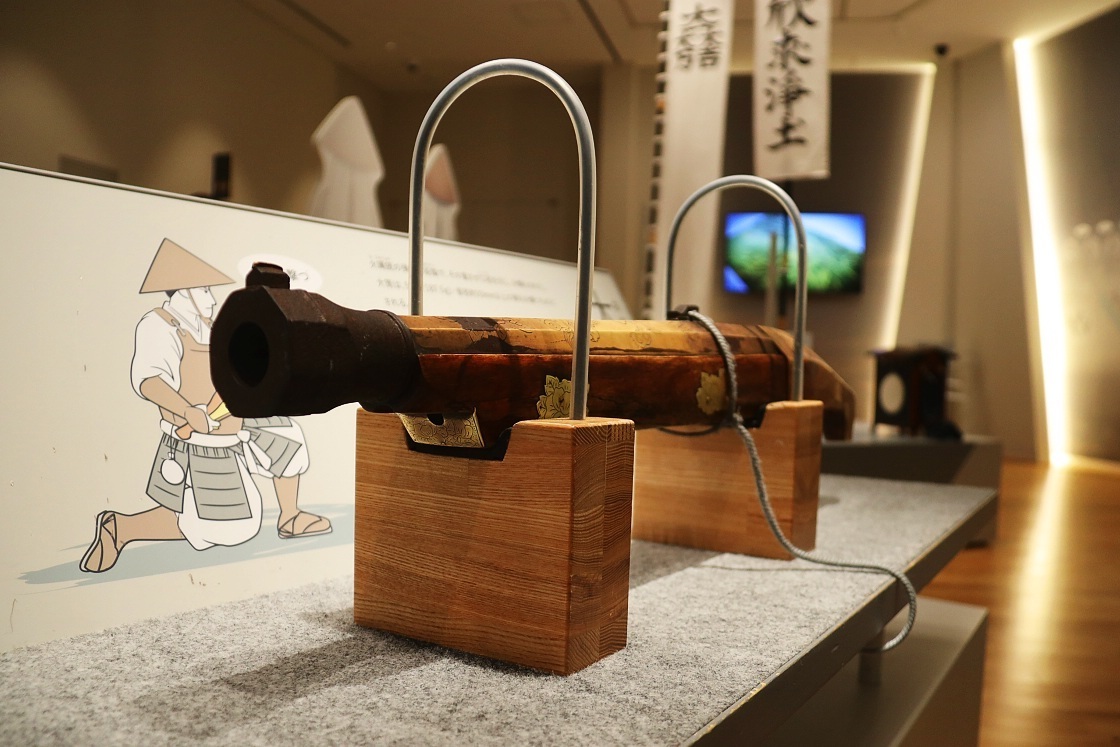
Our final stop at the museum, the top-floor Observation Deck offers a central vantage point over the entire valley, making it the perfect spot for us to get oriented before setting out to explore the battlefield ourselves.
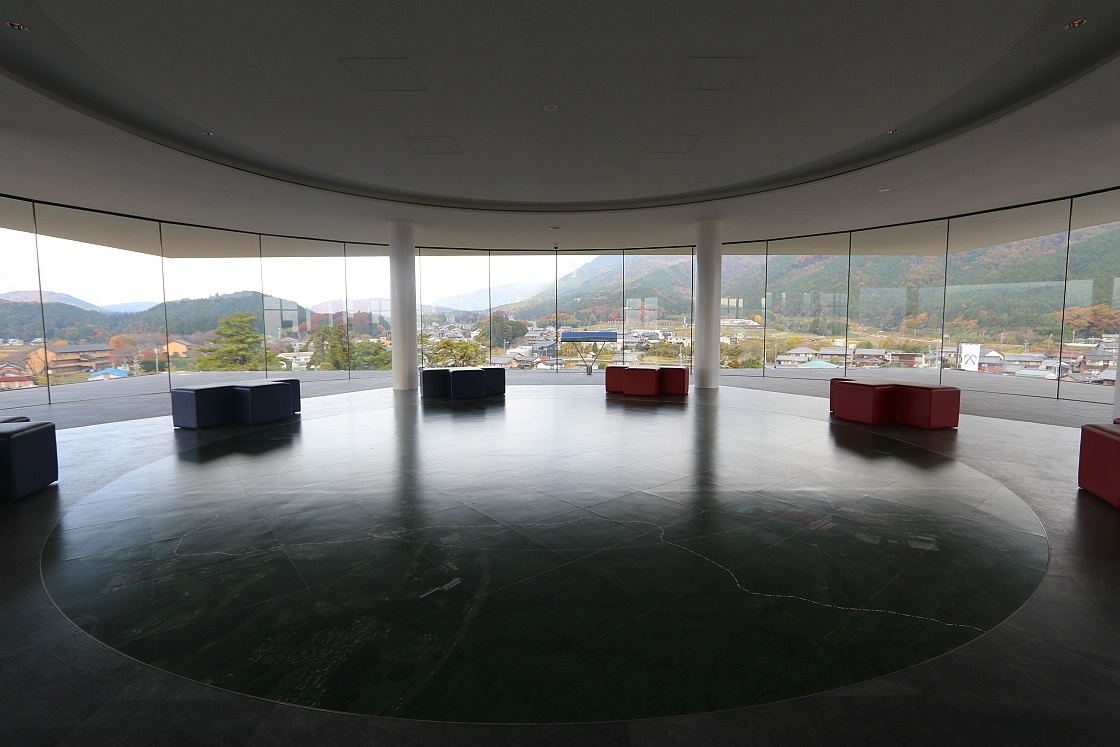

On the morning of the battle, Mitsunari and his allies had already taken a strong defensive position in the hills at the northwest corner of the plain. At around dawn the Tokukugawa force began to arrive from the east, but with thick mist carpeting the field, neither side could get a sense of the other's movements.
At around 8am, an eerie mist that had carpeted the field began to lift, revealing the two armies to one another. On Mount Oka, Tokugawa soldiers lit a great beacon, signaling the start of hostilities. On the plain below, the Tokugawa army surged forward and the battle for the future of Japan was underway.
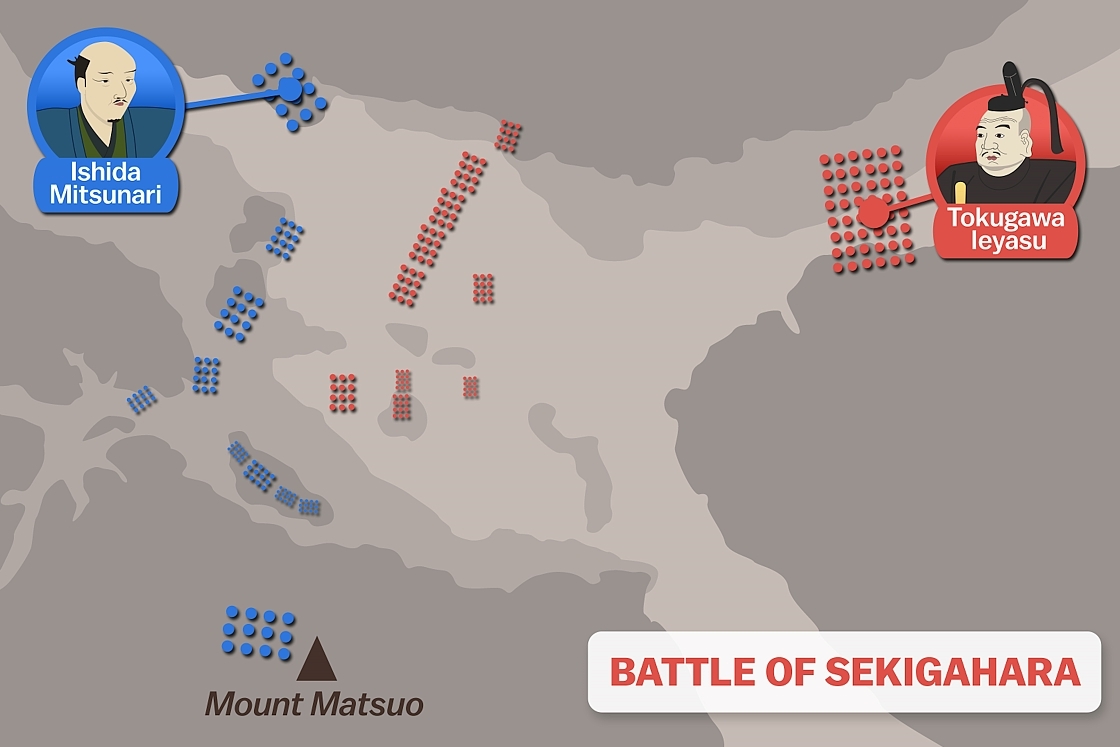

With a strong defensive line and the higher ground, it was Mitsunari's western army that first appeared to have the advantage, beating back wave after wave of attackers. But as the minutes ticked by, cohesion between the allied force began to break down.
More a politician than a warrior, Mitsunari had never quite earned the respect of his allies. As the fighting grew more intense, some of his commanders ignored instructions or simply refused to take any part. Ieyasu meanwhile had already deployed a secret weapon - a storm of letters offering land and titles to any western commander willing to switch sides.
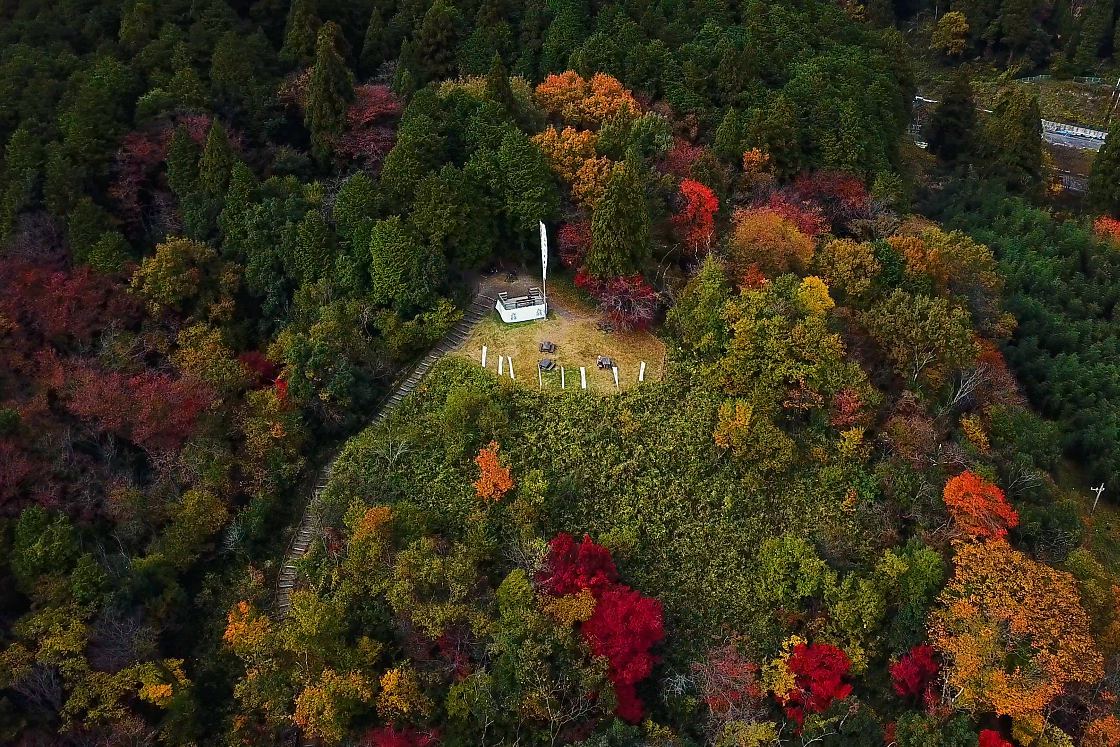
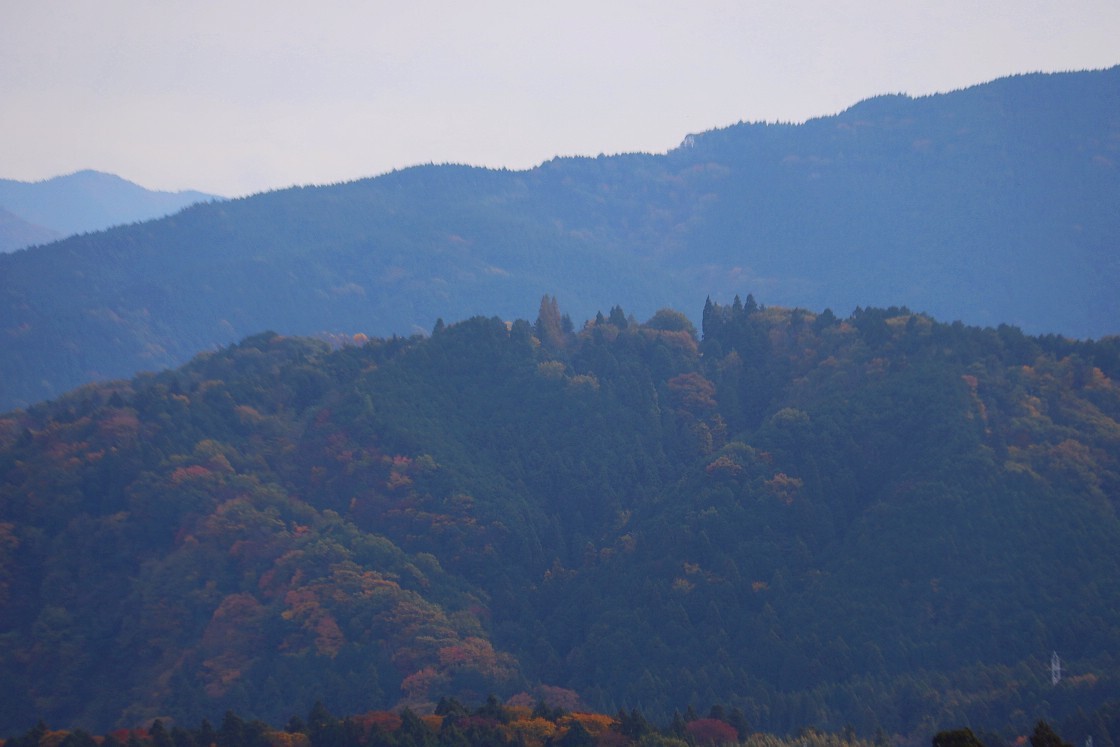
One of several generals planning to do just that was Kobayakawa Hideaki, positioned on Mount Matsuo. Just 19 years old, he had long resented Mitsunari - but as the critical moment approached, he seemed unable to decide what to do.
With Kobayakawa refusing to budge, Ieyasu moved his command post forward to within musket range and ordered a volley of warning shots, forcing the young general to make his choice. At last, Kobayakawa brought his forces down the mountain and into his own side - collapsing the western army in a devastating chain reaction. The battle was over, with Ieyasu victorious.
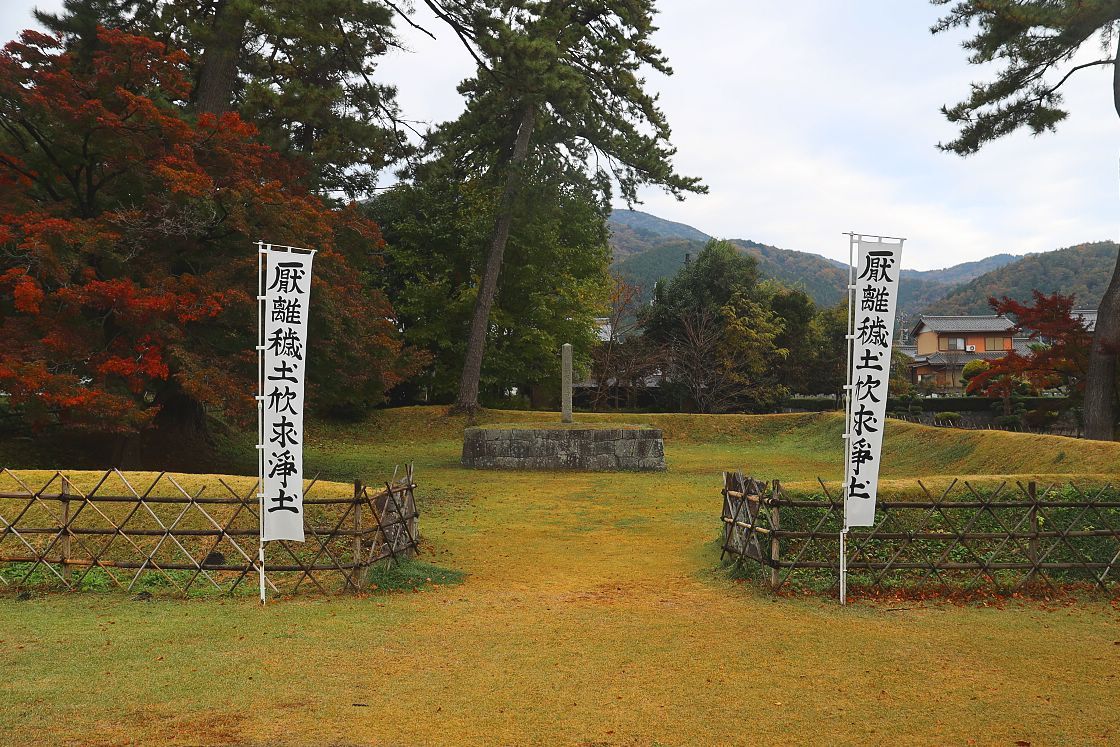
One of the most decisive engagements in Japanese history, the Battle of Sekigahara brought the period of warring states to an effective close. Mitsunari fled the field but was captured soon after and executed in Kyoto, defiant to the last.
Ieyasu further solidified his position and was named shogun in 1603, ushering in a Tokugawa dynasty that would endure for 260 years. Hideyoshi's family would continue to be a thorn in Ieyasu's side until they too were finally wiped out in 1615 at the siege of Osaka Castle.

After taking in some of the best-known sites on the field, we ended our time in Gifu Prefecture at the Higashi Kubizuka, or eastern head mound, where the heads of untold thousands of warriors from both armies were interred, and services in their memory are said to this day.

Access
Nagoya is the region's largest transportation hub, accessible from Tokyo in a 95 minute ride along the JR Tokaido Shinkansen.
To get to Sekigahara from Nagoya, take the JR Tokaido Main Line to Sekigahara Station. The journey often involves a transfer of trains at Ogaki, takes just over one hour and is covered by the Japan Rail Pass.
For Gifu Station, take the JR Tokaido Main Line directly from Nagoya. The journey takes 20 minutes and is covered by the Japan Rail Pass.
For Magome, take the JR Chuo Line from Nagoya to Nakatsugawa (50-75 minutes depending on the train category). From Nakatsugawa it is a 30 minute bus ride to Magome, with departures roughly once per hour. The Japan Rail Pass covers the initial train journey but not the bus.
For Seki, take the JR Hida limited express from Nagoya to Mino-Ota Station (40 minutes) and change to the Nagaragawa Railway for Seki Station (20 minutes). The first train journey is covered by the Japan Rail Pass, but the second is not.
